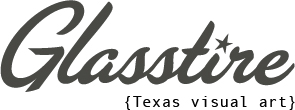What do we learn when we look at new art? About history, about our neighbors, about ourselves. . . As an educator, I take great interest in the intersections between interpreting art and learning new information, and how those processes inform one another. As I walk through the sun-drenched exhibition space at Daisha Board Gallery, taking in Kelsha Reese’s recent show, GOD BODY, I muse about the relevance of windows and mirrors.
In education philosophy, windows and mirrors refer to objects, lessons, or experiences that either reflect the lived experiences of the individual (mirrors) or which open the individual to additional perspectives and lived experiences (windows). It is important to have both. It is empowering to see oneself reflected in the art that we see, as much as it is important and enriching to be exposed to new people and new ways of thinking. Ideally, an effective exhibition might strike both chords: the familiar and the expansive.
Reese lures me into her collages with bold jewel tones, shining glitter, and dynamic figures. The compositions are tactile, the paper pieces intersecting and levitating, their free edges fluttering like feathers emerging from the surface. Reese incorporates smooth, clean, organic shapes cut from soft, velvety paper, layered with moments encrusted with glitter and beads, shining in the gallery light. Leaning on simplicity and clarity, Reese creates animated figures using purposeful shapes in a limited palette. The compositions are familiar, perhaps reminiscent of boldly illustrated children’s books by Jack Ezra Keats, Christian Robinson, or Faith Ringgold. Reese greets me with mirrors, reflecting the familiar back to me, and I gain purchase with the work through those friendly qualities. As charmed as I am by the formal qualities of the work, I acknowledge that Reese has also presented me with a wall full of windows. Though familiar to me in color, material, and composition, Reese’s collages are (pardon the pun) multilayered. Displayed without wall labels, I view the works with relatively little personal context and make note of my first impressions and lingering questions. I find more information on the website. With titles like GOD, POWER REFINEMENT, CULTURE UNDERSTANDING, and RECLAMATION, I see that Reese weaves history, philosophy, and culture into the figurative works. Bold titles for bold collages. I still felt ill-equipped to fully interpret the collages, though that is the beauty of an exhibition like this. Windows help us nurture curiosity, after all. Reese, who is an art teacher by profession, opens the door for her viewers (and students) to put in the work and learn a little bit.
GOD BODY’s description sheds some light on the weighty titles and symbolic content, sharing that Reese’s collages “[delve] into the teachings of the Nation of Gods and Earths (NGE)/5 Percenters, a Black nationalist group formed in the 1960s in Harlem, NY.” A fascinating trip down several internet rabbit holes rewarded that curiosity, adding layers of understanding to the experience. Reese’s body of work makes visual several key tenets of the 5 Percenters’ ideals: that Black men are Gods, and Black women are Earths; that 85 percent of humanity is unenlightened about God, held down and controlled by power-hungry elites; that cultural ideals based in empowerment, spirituality, and transformation connect us past and future.
Figures undulate through their compositions, featuring head wraps, bold jewelry, bucket hats, long nails, and distinctive hair, noses, lips, and teeth. I am drawn to GOD, in which a shirtless figure peels vibrant fruit while leveling the viewer with a languid gaze. Each figure maintains a dignified and powerful presence, popping off the wall with poses that echo art history and social media simultaneously, from strong fists raised in the air to swirling over-the-shoulder compositions. The figures merge with one another, often emerging from plant-like, flame-like tongues of color and pattern. They appear to grow and flicker off the gallery walls. Reese’s collages give the impression of timeless mythologies rooted in real people. These are portraits and icons, glinting with gold and glimmering in the gallery lights.
The beauty of a body of work like this is that it makes space for viewers who approach the content like an old friend as well as those to whom the stories and visual culture are new acquaintances. Though small, the show is concise. Reese wants us to be excited, wants us to be curious, wants us to look into mirrors and see beyond windows. And I am. And I did.
GOD BODY is a fitting contribution to Daisha Board Gallery, known for representing and platforming BIPOC artists, LGBTQIA+ artists, and artists with disabilities. The space prioritizes marginalized voices telling new and familiar stories, which Reese brings in force. Knowing that Reese is also an art educator, I wonder what her goals might be for visitors interacting with her collages in the long term? They are ripe for a reflective journal prompt, an exercise in symbolism, and a thoughtful interdisciplinary curricular connection. I find that educators often bring such a thoughtful, community-building component to the artwork they create. I look forward to seeing what windows and mirrors Reese brings next.
GOD BODY is on view at Daisha Board Gallery, Dallas through August 3, 2024.






